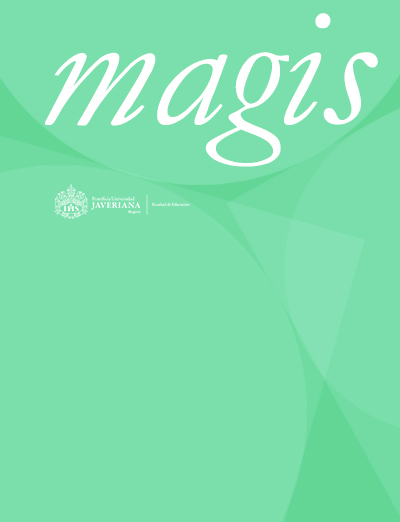Resumo
The aim of the present study was to identify the social characteristics of undergraduate students in Ecuador. Several analyses were carried out for this purpose; namely descriptive and multidimensional analyses. The descriptive analysis reveals the frequencies and percentages of the variables used in the study. The multidimensional analysis of multiple correspondences shows the differentiation criteria, and the hierarchical analysis classifies respondents based on their common characteristics. The results of this study reveal the characteristics of current undergraduate students in Ecuador and as such can help government and other higher educational authorities to develop future policies regarding undergraduate study in Ecuador.
Bonilla Marchán, A. M.; Delgado, R. & Stefos, E. (2017b). The Social Characteristics of Postgraduate Students in Ecuador: A Multidimensional Statistical Analysis. Review of European Studies, 9 (2), 35-44. doi: 10.5539/res.v9n2p35. Available at: http://www.ccsenet.org/journal/index.php/res/article/download/65365/36313
Charvet, Ê. (2010). Feminización estudiantil y masculinización docente en la universidad ecuatoriana. In R. Ramírez (coord.). Transformar la universidad para transformar la sociedad, 125-138. Quito: La Universidad. Available at: http://reneramirez.ec/transformar-la-universidad-para-transformar-la-sociedad/
Cleveland, W. S. (1993). Visualizing Data. Summit, New Jersey: Hobart Press.
Contrato Social por la Educación (2014). Cuadernos del Contrato Social por la Educación, 10. Francisco Cevallos Tejada (ed.). Quito. Available at: http://contratosocialecuador.org/images/publicaciones/cuadermos/10.pdf
Ecuador, Instituto Nacional de Estadística y Censos, INEC (2016). Encuesta Nacional de Empleo, Desempleo y Subempleo, ENEMDU. Quito: INEC. Available at: http://www.ecuadorencifras.gob.ec/documentos/web-inec/EMPLEO/2016/Diciembre-2016/122016_Presentacion_Laboral.pdf
Ecuador (2010). Ley Orgánica de Educación Superior – LOES. Registro Oficial Suplemento 298, 12 de octubre de 2010. Available at: http://www.ces.gob.ec/index.php?option=com_phocadownload&view=category&id=11&Itemid=137
Habley, W.; Bloom, J. & Robbins, S. (2012). Core Components of Student Success. In Increasing Persistence. Research-Based Strategies for College Student Success, Section 3, 99-210. San Francisco: Jossey-Bass.
Housand, A. (2016). Centennials: The World is Waiting! Parenting for High Potential, 5 (2), 6-9. Available at: http://www.nagc.org/sites/default/files/Publication%20PHP/NAGC_PHP_Winter2016_Screen_km.pdf
Kampouropoulou, M.; Fokiali, P.; Efstathiou, I.; Koutris, T. & Stefos, E. (2015). Students' Views on the Use of a Virtual Educational Museum. Review of European Studies, 7 (11), 1-6. doi: 10.5539/res.v7n11p1. Available at: http://www.ccsenet.org/journal/index.php/res/issue/view/1376
Koulianidi, G. & Stefos, E. (2015). Consequences of Dietary Habits and Endocrine Disruptors in School Performance of Children Aged 10-12 in Greece. American Journal of Food Science and Nutrition, 2 (6), 113-120.
Leppel, K. (2012). Similarities and Differences in the College Persistence of Men and Women. The Review of Higher Education, 25 (4), 433-450.
Lowis, M. & Castley, A. (2008). Factors Affecting Student Progression and Achievement: Prediction and Intervention. A Two Year-Study. Innovations in Education and Teaching International, 4 (45), 333-343.
Papapostolou, I. & Stefos, E. (2013). Qualitative Analysis on Pedagogical Research. Methodological Approaches. In I. Papapostolou (ed.). Educational Activities. Teaching Interventions in Secondary Education, 244-251. Rhodes: Evdimos Editions.
Renn, K. & Reason, R. (2013). College Students in the United States: Characteristics, Experiences, and Outcomes. San Francisco, California: Jossey-Bass.
Seidman, A. (2012). College Student Retention: A Formula for Success. Lanham, Maryland: Rowman & Littlefield Publishers.
Stefos, E. (2015). Causes of Death of Indigenous Ecuadorians. International Journal of Clinical Medicine Research, 2 (6), 65-70. Available at: https://pdfs.semanticscholar.org/5af0/364fac38bd93dcf04c703169641d3d09a163.pdf
Stefos, Ε.; Athanasiadis, I.; Gialamas, B. & Tsolakidis, C. (2011). The Use of New Technologies and the Project Method in Teaching Statistics: A Case Study in Higher Education. The Hellenic Mathematical Society, International Journal for Mathematics in Education, HMS i JME, 3 (2010-2011), 84-100. Available at: https://www.puce.edu.ec/sitios/biblioteca/pdf/EfstathiosStefos11.pdf
Stefos, E. & Efstathiou, I. (2013). Quantitative Analysis of the Data of the School of Trianta during the Period of 1906-1916. In I. Papapostolou (ed.). Educational Activities. Teaching Interventions in Secondary Education, 29-57. Rhodes: Evdimos Editions.
Stefos, E. & Koulianidi, G. (2016). Nutrition Data Analysis Using R: Applications in Higher Education. Health Sciences Research, 3 (1), 10-16. Available at: https://www.puce.edu.ec/sitios/biblioteca/pdf/EfstathiosStefos2.pdf
Stefos, E. & Papapostolou, I. (2013). Research Methodology. Processes and Suggestions. In I. Papapostolou (ed.). Educational Activities. Teaching Interventions in Secondary Education, 406-423. Rhodes: Evdimos Editions.
Taylor, J.; Machado, M. de L. & Peterson, M. (2008). Leadership and Strategic Management: Keys to Institutional Priorities and Planning. European Journal of Education, 43 (3), 369-386. Available at: http://citeseerx.ist.psu.edu/viewdoc/download?doi=10.1.1.895.9324&rep=rep1&type=pdf
Witte, J. F. (2009). Vouchers. In G. Sykes, B. Schneider & D. N. Plank (eds.). Handbook of Education Policy Research, 491-501. New York: Routledge.
Wong, P. C. (1999). Visual Data Mining. IEEE Computer Graphics and Applications, 19 (5), 20-21.
A revista magis, Revista Internacional de Pesquisa em Educação by Pontificia Universidad Javeriana encontra-se registada sob a licencia Creative Commons Versão 4.0 Internacional. Portanto, esta obra pode se reproduzir, distribuir e comunicar publicamente em formato digital, sempre que dado o crédito apropriado para os autores e a Pontificia Universidad Javeriana. Permite-se citar, adaptar, remixar, transformar, autoarquivar, republicar e criar a partir do material, para qualquer fim, mesmo que comercial, sempre que indicado apropriadamente o nome do criador, provido um link para a obra original e indicado se mudanças foram feitas. A Pontificia Universidad Javeriana não retém os direitos sobre as obras publicadas e os conteúdos são responsabilidade exclusiva dos autores, os quais conservam seus direitos morais, intelectuais, de privacidade e publicidade.
O aval sobre a intervenção da obra (revisão, correção, edição, tradução, formatação) e a subsequente difusão disponibiliza-se através de licença de uso e não através de transmissão de direitos, o que representa que a revista e a Pontificia Universidad Javeriana são isentas de qualquer responsabilidade que puder se derivar de uma prática ética pobre por parte dos autores. Em consequência da proteção fornecida pela licença de uso, a revista não fica na obrigação de publicar retratações ou alterar informações já publicadas, a não ser que a errata seja decorrente do processo de gestão editorial. A publicação de conteúdos nesta revista não representa royalties para os contribuintes.
Creative Commons Attribution 4.0 International Public License



